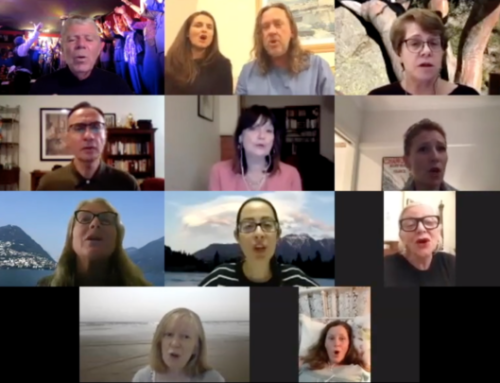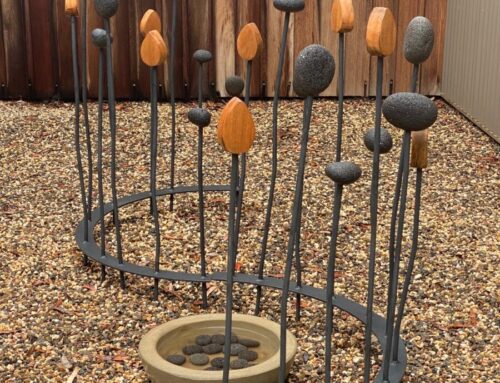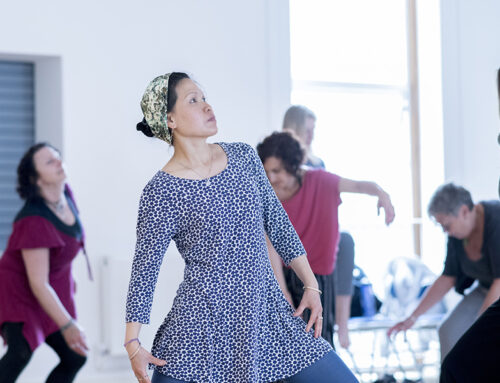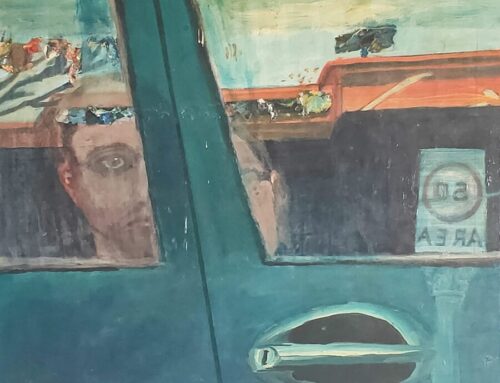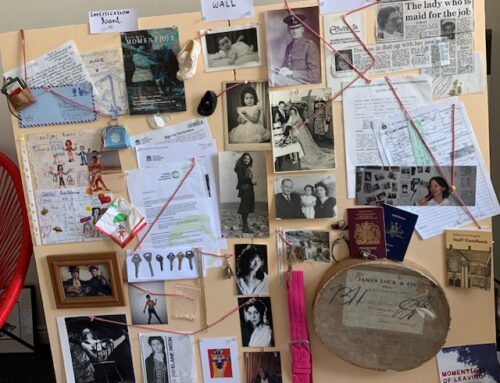Sylvia is a multi-disciplinary artist working across sculpture, installation, textiles photography, painting and video. Her work in general is linked to experiences of trauma, which in turn communicates universal themes of grief, mourning and loss. She recently obtained her PhD from Sydney College of the Arts. Titled “Inscribing Memory: art and the place of personal expressions of grief in memorial culture”, it was completed in 2016 and she graduated in 2017.
Recent extreme political and health events have highlighted the need to have an outlet for dealing with physical, emotional and mental ill health and trauma. The arts and other creative pathways offer a space for contemplation and a means by which one can make something powerful and even beautiful from something bleak or dark. I have found that during this year my work has become increasingly abstracted and even less representational. This is perhaps in reaction to the overload of information we have had to deal with.
‘Inhabit’, the piece I have contributed to The Making Effect, references loss and family connection through “inhabiting” my late mother’s monogram on an item from her vast collection of dowry linen, by embroidering around each initial with my own hair. In using hair in this way, it becomes transformed from its usual associations with beauty to something more abject. So, while the action of sewing may reference domesticity and female practices, my use of hair signals something darker and menacing. The process of sewing with single strands of hair is painstaking but curiously satisfying.
I prefer to signal trauma, grief or loss through material means and through addressing themes such as absence and lost connections. Putting feelings of stress, distress or trauma into creative work can offer a means of working through these states.
I believe that expressing oneself through artwork can assist recovery, build resilience and be empowering. It has certainly assisted me in finding a voice to express the grief and powerlessness I had felt in the past and made me feel that I am part of something bigger.
I hope that my work speaks to the broader themes of powerlessness, grief and trauma cross-culturally. The nature of grief and trauma is a universal one.
My intention is to involve the viewer in a visceral experience, that is, to have an emotional response that they can then relate to their own experience of grief or trauma. This, hopefully may help them in processing their own issues, finding a voice and feeling less alone. Overcoming feelings such as shame and inadequacy – so common to those experiencing hardship of any kind – is liberating and essential to emotional wellbeing.
The making of art, as earlier implied, is essential to my emotional wellbeing. My family’s traumatic history has been a catalyst for the work I have done for the past decade. Before this, I probably wasn’t ready to deal with such challenging subject matter. Sometimes it takes time and life experience to get to that point. Also, further post-graduate study gave me the theoretical framework, support and encouragement to development this work.
Several other artists’ works have been influential and I am always interested to see what other artists working with similar subject matter to me are doing. One of my art heroes is Colombian artist Doris Salcedo whose elegant, intelligent work encapsulates all that I aim to communicate. I often come across inspiring new artists and their artworks via online contemporary art publications and social media platforms such as Instagram.

Sylvia Griffin
More of Sylvia’s work can be found at www.sylviagriffin.com.au

